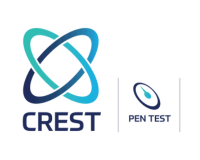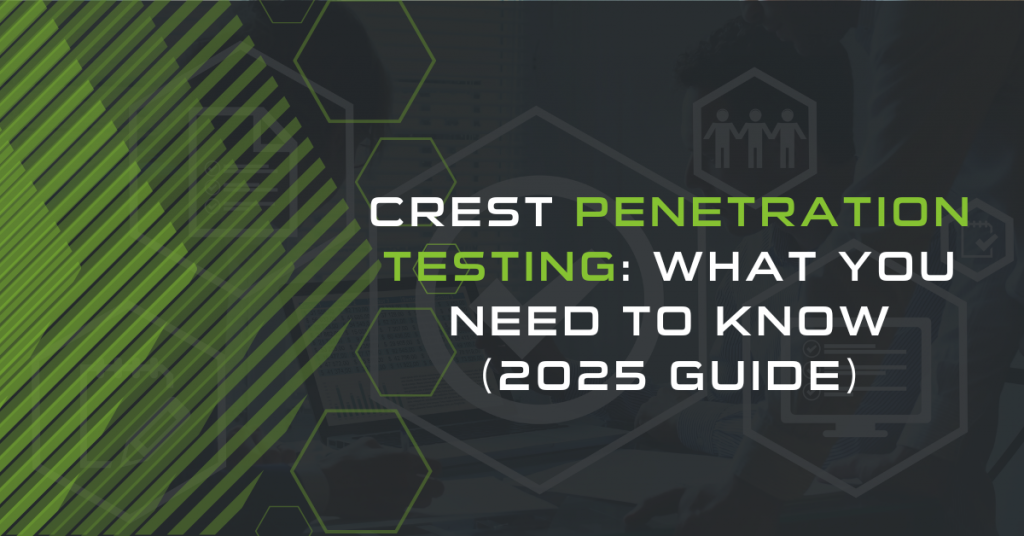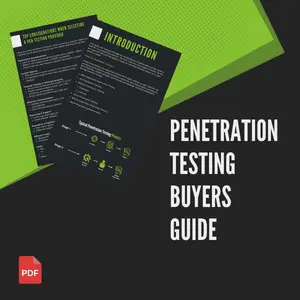What is Network Penetration Testing?
Network penetration testing, often referred to as “pen testing,” is a simulated cyber-attack against your network to evaluate its security. The primary objective of network testing is to identify vulnerabilities, weaknesses, and gaps in your network security before malicious hackers have a chance to exploit them. This allows your business to better understand its security posture and take corrective actions accordingly.
There are two main types of network penetration testing: external penetration testing and internal penetration testing. The former focuses on identifying vulnerabilities in the network that are exposed to the Internet, such as web, VPN, and email servers. On the other hand, the latter aims to uncover internal vulnerabilities that could be exploited by someone who already has access to the network, such as an employee, contractor, or hacker who has compromised the network via other means.
Network Penetration Testing Vulnerabilities
Want to find out if your Network has these vulnerabilities?

What does choosing a CREST provider mean?
Grey, Black and White Box Penetration Testing
What does Network Penetration Testing include?
What are the benefits of a network penetration test?
The benefits of conducting network penetration testing are manifold:
In essence, network penetration testing is an investment in your organisation’s cybersecurity, offering both immediate and long-term advantages.
Network Penetration Testing Methodology
In this initial phase, we define the scope and objectives of the penetration testing project. We identify the IP addresses and assets to be tested, understand the systems’ functionalities in scope, and set clear goals and expectations. Proper scoping ensures we focus our testing efforts and align them with the organisation’s security requirements.
During this phase, we gather as much information as possible about the assets. We understand the network architecture and underlying technologies in use across the domain (If used), collecting data from the network assets and vulnerability scans. Our primary goal is to create a detailed map of the attack surface.
In this phase, we use automated and manual tools to scan the network for known vulnerabilities. We identify issues with network segregation, patching and a plethora of other Network Security vulnerabilities. The scan results provide a preliminary list of potential security weaknesses that require further manual validation.
During threat modelling, we analyse the network from an attacker’s perspective. We examine various scenarios and identify how an attacker might exploit the network infrastructure. This helps us prioritise the vulnerabilities based on their potential impact and likelihood of exploitation.
In this phase, we manually exploit the identified vulnerabilities. We bypass security measures for authentication, exploit weak authorisation controls, check for privilege escalation vectors, and use other attack methods. We aim to understand how the vulnerabilities affect real-world situations and compile proof of successful exploitation.
In the final phase, we compile a detailed report of the findings. The report describes the vulnerabilities, provides evidence of exploitation, and assesses their severity and impact. Additionally, we include recommendations for remediation and improvement. We then plan a retest to ensure we have resolved the issues.
Penetration Test Reports, Delivered.
Our comprehensive, professional reports clearly communicate risks, provide detailed remediation guidance, and demonstrate compliance with industry standards. Our deliverables are available through the Sencode Portal or accessible via a downloadable PDF.
Contact a consulting team member by phone, email, or pigeon post. We will then discuss whether we can help you and arrange a scoping meeting to discuss your requirements.
In the scoping meeting, our team will discuss your requirements in further detail. Our team will ask questions in regards to the following:
Our expert consultants will discuss and finalise which digital assets you need testing in the scoping meeting. Based on the requirements, we will then assemble a project proposal and quote and agree on a schedule for conducting the security assessment. Our proposal document will include the following information:
The Penetration Testing starts. A member of our Penetration Testing team will liaise with a member of your company throughout the entire testing process. You will be the first to know if we have any questions or concerns. Our testing team will be on hand throughout the penetration test lifecycle to answer any questions or concerns. Our tester will:
A Penetration Test is useless without a well-written report. Our reports are written in plain English, concise, and thoroughly documented. The Penetration Test Report is typically furnished within 5 days after the testing phase is complete. If you are interested in seeing an example report, please contact our team.
Each report details the following:
At Sencode, we offer free retesting for every Penetration Test we conduct. You fix the issues; then we will verify they can no longer be exploited by an attacker. Our team will arrange a mutually suitable time to conduct the retest, after the remediation efforts have taken place. Our tester will follow these steps:
Our clients receive a testing certificate that can be shared with partners and customers, showing that their company takes security seriously. The certificate and document are designed to be easily digested by third-party suppliers, the document removes the technical details and can be safely distributed.
The Security Testing Certificate is available on request, after the retest has been complete. The security certificate shows:
Get in touch for a consultation.
Contact a consulting team member by phone, email, or pigeon post. We will then discuss whether we can help you and arrange a scoping meeting to discuss your requirements.
In the scoping meeting, our team will discuss your requirements in further detail. Our team will ask questions in regards to the following:
Testimonials
Huler
Trinity College Dublin
Diversity and Ability
Verve Group
Pip Studios
Home Group









Frequently Asked Questions: Network Penetration Testing
While vulnerability scans and network penetration tests aim to identify weaknesses, they differ. A vulnerability scan is an automated process that scans the network for known vulnerabilities using tools such as Nessus and OpenVAS. Vulnerability scanning is less comprehensive and doesn’t simulate real-world attacks the same was a manual assessment does.
A network penetration test is a more rigorous and exhaustive network security evaluation. Unlike a vulnerability scan, a penetration test doesn’t just stop at identifying vulnerabilities; it goes further to exploit them actively. This is akin to simulating the tactics, techniques, and procedures that a genuine attacker might employ. For instance, while a vulnerability scan might flag the use of outdated protocols like Link-Local Multicast Name Resolution (LLMNR), a penetration test would actively attempt to compromise the network using poisoning attacks on these protocols.
Network penetration testing aims to safeguard an organisation’s network infrastructure against potential cyber threats by meticulously identifying and evaluating its vulnerabilities. This is achieved through a simulated cyber-attack, which, contrary to real-world breaches, is a controlled, ethical activity designed to assess the network’s robustness without causing disruption.
Network penetration testing, encompassing both external penetration testing and internal penetration testing, aims to illuminate areas of weakness within a network’s security apparatus, whether they are exposed to the external digital environment or nestled within its internal mechanisms.
The goal of a network penetration test can vary widely depending on the organisation’s testing requirements. The goal is usually defined at the point of scoping the assessment. Network penetration testing can be from an authenticated, unauthenticated, or both perspectives. Different testing perspectives can heavily influence the goals.
Below are some common goals often detailed in network penetration tests:
Ensure the network adheres to relevant regulatory and compliance standards, such as GDPR, HIPAA, or PCI DSS, by validating the security controls.
Simulate cyber-attacks to test the efficacy of the incident response plan and understand how well a security team can identify, contain, and mitigate real-world breach attempts.
Discover and document vulnerabilities in external-facing assets like web applications, email servers, and VPN endpoints.
Identify weaknesses within the internal network, such as misconfigurations, unpatched systems, and insecure data storage practices.
The cost of a network penetration test in the UK can vary widely depending on several factors, such as the scope, complexity, location, and retesting requirements.
A general guideline for network penetration testing costs in the UK are as follows:
– Small Businesses: For a small business with a simple network, costs might range from £1,000 to £5,000.
– Medium-sized Businesses: For a medium-sized business with a simple network, costs might range from £5,000 to £15,000.
– Large Enterprises: For large enterprises with multiple locations and complex networks, the cost can easily exceed £15,000 and go up to £30,000 or more.
These prices are variable based on the number of assets being tested, retesting requirements, after-hours testing and skills required to conduct the engagement.
For detailed information on penetration testing cost factors, please refer to our extensively detailed blog post “How much does Penetration Testing cost?“
Penetration testing, often called pen testing, is crucial for enhancing network security by proactively identifying and addressing vulnerabilities. Network Pen Testing helps an organisation identify security gaps by detecting the presence of vulnerabilities within its network infrastructure. Such may arise because of unpatched software with configuration weaknesses and weak passwords. A third-party penetration test will also let an organisation test the efficiency of its controls and response policies in case security incidents or crises arise.
Moreover, pen testing ensures compliance with regulatory standards, which require running tests in specified intervals to remain compliant with specified controls, such as the GDPR, HIPAA, and PCI DSS. Early detection and fixing of vulnerabilities also greatly minimise the chances of data breaches and related costs. The insights provided in the pen test increase employees’ general security awareness to understand best practices and risks.
Yes, it is vital to pen test your internal network for various reasons. An internal network is vulnerable and might be attacked from the inside or outside. Insider threats can emanate from disgruntled workers and accidental breaches.
Outside threats include cyber-attacks that penetrate network defences. Pen testing will identify and mitigate risks from these two sources. It can ensure that vulnerabilities are found and remediated before they may be exploited. This will ensure a comprehensive approach to threats by securing the network and making it more reliable and robust in its security.
Penetration testing in network security involves the systematic assessment of a network’s security by stimulating cyber attacks, which helps to reveal vulnerabilities that may be exploited by an attacker. Using many tools and techniques, the pen tester scans and identifies probable vulnerabilities on the target network. The tester then tries to exploit them to understand how they could be used by a would-be attacker. Detailed reports are generated, highlighting vulnerabilities, exploitation methods, and recommended remediation steps. After fixes are implemented, pen testers often retest to ensure that vulnerabilities have been effectively addressed.










